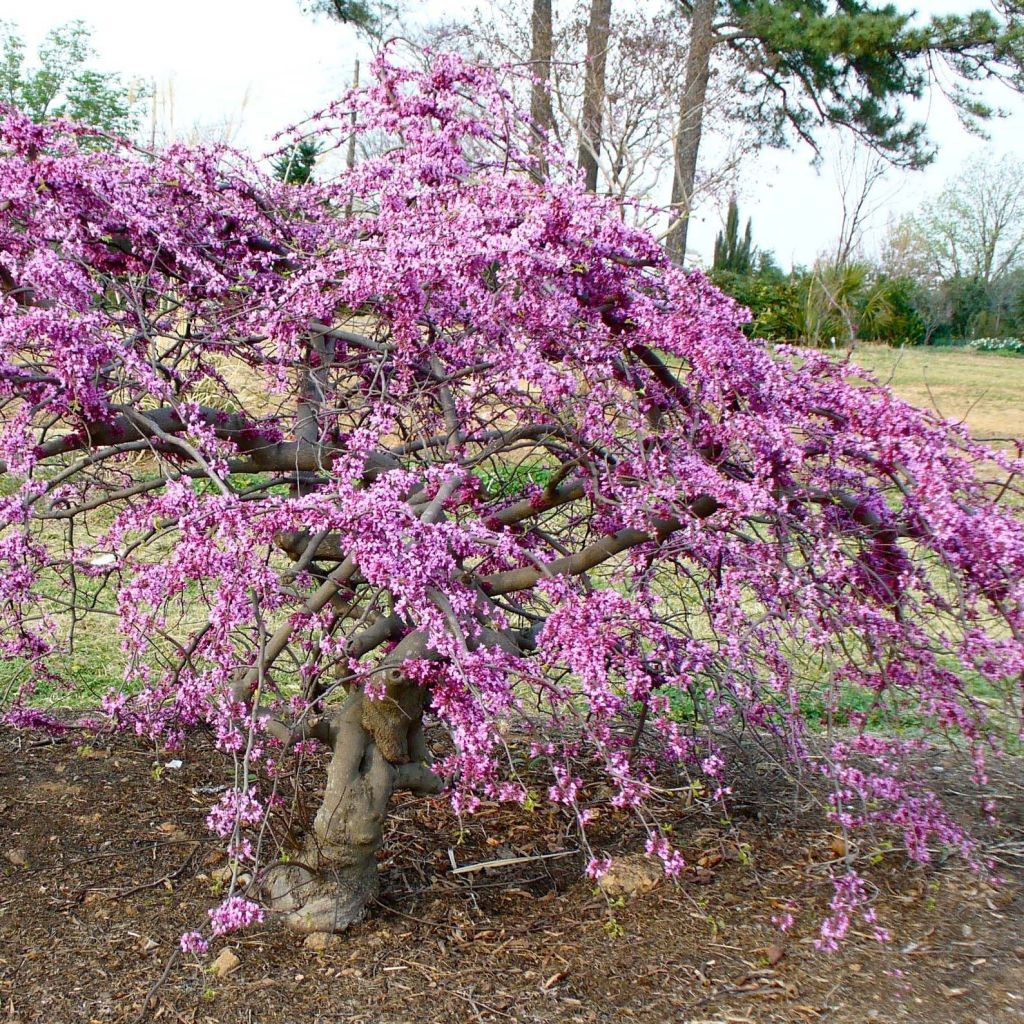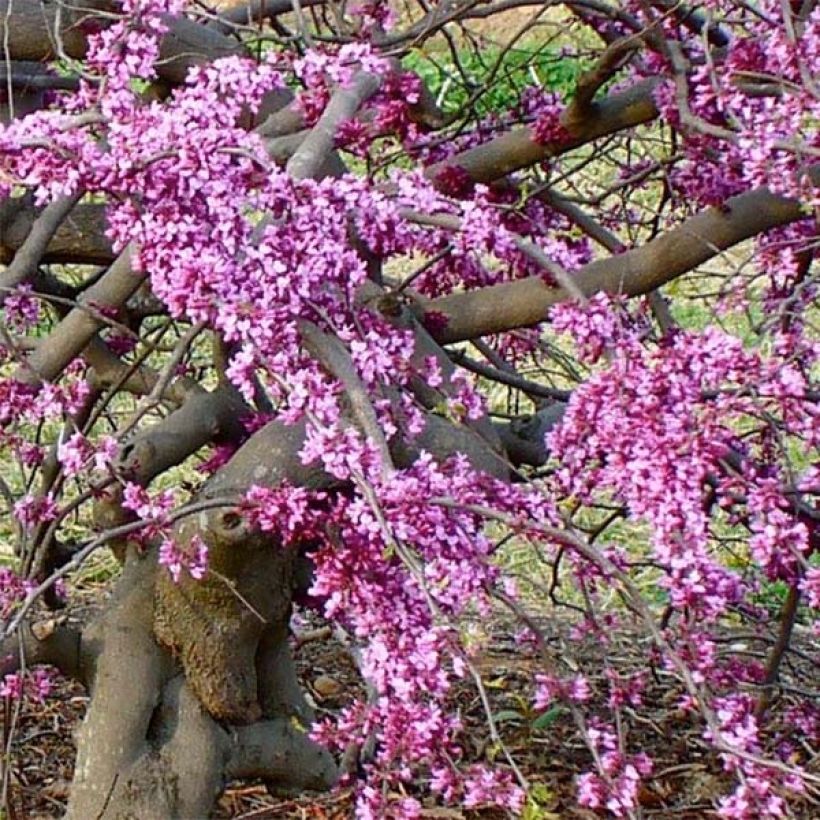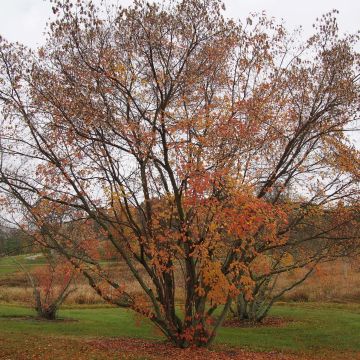

Cercis canadensis Traveller - Arbre de Judée nain, pleureur.


Cercis canadensis Traveller - Arbre de Judée nain, pleureur.
Cercis canadensis var.texensis Traveller - Eastern Redbud
Cercis canadensis var.texensis Traveller
Texas Redbud, Texas Eastern Redbud
Special offer!
Receive a €20 voucher for any order over €90 (excluding delivery costs, credit notes, and plastic-free options)!
1- Add your favorite plants to your cart.
2- Once you have reached €90, confirm your order (you can even choose the delivery date!).
3- As soon as your order is shipped, you will receive an email containing your voucher code, valid for 3 months (90 days).
Your voucher is unique and can only be used once, for any order with a minimum value of €20, excluding delivery costs.
Can be combined with other current offers, non-divisible and non-refundable.
Home or relay delivery (depending on size and destination)
Schedule delivery date,
and select date in basket
This plant carries a 24 months recovery warranty
More information
We guarantee the quality of our plants for a full growing cycle, and will replace at our expense any plant that fails to recover under normal climatic and planting conditions.
Would this plant suit my garden?
Set up your Plantfit profile →
Description
The Cercis canadensis 'Traveller' is a recent variety of redbuds which are not yet common in gardens. It is a small bush that is adaptable and pretty, making it an excellent choice for small spaces like open ground or sunny terraces. This dwarf and weeping Texas Redbud has a strong and easy-going nature. It blooms in spring with pinkish-purple pea flowers, followed by translucent red shoots that unfold into glossy green leaves. The leaves turn into beautiful autumn colours, making them a great garden addition.
Cercis canadensis var texensis, or Cercis occidentalis, is a type of tree that belongs to the legume or pea family. This particular species of redbud tree is found in the western region of the United States, ranging from the mountains of southern Oklahoma to the central Texas limestone hills, as well as northeastern Mexico. It is more resilient to drought than its eastern relative, the typical Redbud tree of Canada, which is more commonly known.
'Traveller' is a small tree that grows slowly and can reach up to 1.50m (4 ft 11 in) in 10 years, depending on the growing conditions. The tree has a weeping habit, meaning its branches bend towards the ground, often forming a dense mass that is wider than tall. 'Traveller' produces pinkish-purple flowers that are pea-shaped and appear in April before the leaves. The leaves emerge red-purple and translucent, then turn into a shiny dark green colour. The leaves take on yellow, orange, or red hues in autumn, depending on the year and soil type. The tree's leaves are cordate, 6-7cm (2.4-2.8 in) long, and slightly villous underneath. The aged branches and trunk have a grey-black, fissured bark. The tree has a twisted-looking trunk and a 'parasol' canopy, which gives it a Japanese silhouette.
The 'Traveller' Redbud is a small, attractive bush that can add personality to any garden. It thrives in all soil types, including dry and chalky soil during summer. It is hardy and can grow anywhere without needing specific pruning. It can be planted as a standalone specimen for its year-round presence or used as an aged specimen trained to grow in the shape of an 'umbrella' on a twisted trunk in a small Japanese scene surrounded by Mascarene grass. Alternatively, it can be placed against a wall or evergreen foliage, accompanied by a 'Plumosa Aurea' Elderberry for colour and shape contrast. You can plant Darley Heath and Hellebores in its shade for the winter. You can also pair it with a dwarf Winged Euonymus and a beautiful Cotinus Grace, which has airy clusters of summer flowers and sumptuous autumn foliage.
Cercis canadensis var.texensis Traveller - Eastern Redbud in pictures






Plant habit
Flowering
Foliage
Botanical data
Cercis
canadensis var.texensis
Traveller
Fabaceae
Texas Redbud, Texas Eastern Redbud
Cultivar or hybrid
Other Cercis
View all →Planting and care
To plant Cercis canadensis 'Traveller', choose early spring or autumn and a spot with full sun or partial shade. The tree can grow in different soil types if it's deep enough. Avoid heavy and permanently wet soil, but don't worry about chalky soil or summer drought once the tree is established. If the soil is poor, mix in good compost or potting soil. Water the tree regularly, especially during the first two summers and in case of prolonged drought. Cercis canadensis 'Traveller' can grow in any soil type but prefers neutral or alkaline soil. Protect young shoots from frost in early spring using horticultural fleece, especially during a cold spell in March.
Planting period
Intended location
Care
Planting & care advice
This item has not been reviewed yet - be the first to leave a review about it.
Similar products
Haven't found what you were looking for?
Hardiness is the lowest winter temperature a plant can endure without suffering serious damage or even dying. However, hardiness is affected by location (a sheltered area, such as a patio), protection (winter cover) and soil type (hardiness is improved by well-drained soil).

Photo Sharing Terms & Conditions
In order to encourage gardeners to interact and share their experiences, Promesse de fleurs offers various media enabling content to be uploaded onto its Site - in particular via the ‘Photo sharing’ module.
The User agrees to refrain from:
- Posting any content that is illegal, prejudicial, insulting, racist, inciteful to hatred, revisionist, contrary to public decency, that infringes on privacy or on the privacy rights of third parties, in particular the publicity rights of persons and goods, intellectual property rights, or the right to privacy.
- Submitting content on behalf of a third party;
- Impersonate the identity of a third party and/or publish any personal information about a third party;
In general, the User undertakes to refrain from any unethical behaviour.
All Content (in particular text, comments, files, images, photos, videos, creative works, etc.), which may be subject to property or intellectual property rights, image or other private rights, shall remain the property of the User, subject to the limited rights granted by the terms of the licence granted by Promesse de fleurs as stated below. Users are at liberty to publish or not to publish such Content on the Site, notably via the ‘Photo Sharing’ facility, and accept that this Content shall be made public and freely accessible, notably on the Internet.
Users further acknowledge, undertake to have ,and guarantee that they hold all necessary rights and permissions to publish such material on the Site, in particular with regard to the legislation in force pertaining to any privacy, property, intellectual property, image, or contractual rights, or rights of any other nature. By publishing such Content on the Site, Users acknowledge accepting full liability as publishers of the Content within the meaning of the law, and grant Promesse de fleurs, free of charge, an inclusive, worldwide licence for the said Content for the entire duration of its publication, including all reproduction, representation, up/downloading, displaying, performing, transmission, and storage rights.
Users also grant permission for their name to be linked to the Content and accept that this link may not always be made available.
By engaging in posting material, Users consent to their Content becoming automatically accessible on the Internet, in particular on other sites and/or blogs and/or web pages of the Promesse de fleurs site, including in particular social pages and the Promesse de fleurs catalogue.
Users may secure the removal of entrusted content free of charge by issuing a simple request via our contact form.
The flowering period indicated on our website applies to countries and regions located in USDA zone 8 (France, the United Kingdom, Ireland, the Netherlands, etc.)
It will vary according to where you live:
- In zones 9 to 10 (Italy, Spain, Greece, etc.), flowering will occur about 2 to 4 weeks earlier.
- In zones 6 to 7 (Germany, Poland, Slovenia, and lower mountainous regions), flowering will be delayed by 2 to 3 weeks.
- In zone 5 (Central Europe, Scandinavia), blooming will be delayed by 3 to 5 weeks.
In temperate climates, pruning of spring-flowering shrubs (forsythia, spireas, etc.) should be done just after flowering.
Pruning of summer-flowering shrubs (Indian Lilac, Perovskia, etc.) can be done in winter or spring.
In cold regions as well as with frost-sensitive plants, avoid pruning too early when severe frosts may still occur.
The planting period indicated on our website applies to countries and regions located in USDA zone 8 (France, United Kingdom, Ireland, Netherlands).
It will vary according to where you live:
- In Mediterranean zones (Marseille, Madrid, Milan, etc.), autumn and winter are the best planting periods.
- In continental zones (Strasbourg, Munich, Vienna, etc.), delay planting by 2 to 3 weeks in spring and bring it forward by 2 to 4 weeks in autumn.
- In mountainous regions (the Alps, Pyrenees, Carpathians, etc.), it is best to plant in late spring (May-June) or late summer (August-September).
The harvesting period indicated on our website applies to countries and regions in USDA zone 8 (France, England, Ireland, the Netherlands).
In colder areas (Scandinavia, Poland, Austria...) fruit and vegetable harvests are likely to be delayed by 3-4 weeks.
In warmer areas (Italy, Spain, Greece, etc.), harvesting will probably take place earlier, depending on weather conditions.
The sowing periods indicated on our website apply to countries and regions within USDA Zone 8 (France, UK, Ireland, Netherlands).
In colder areas (Scandinavia, Poland, Austria...), delay any outdoor sowing by 3-4 weeks, or sow under glass.
In warmer climes (Italy, Spain, Greece, etc.), bring outdoor sowing forward by a few weeks.



























































